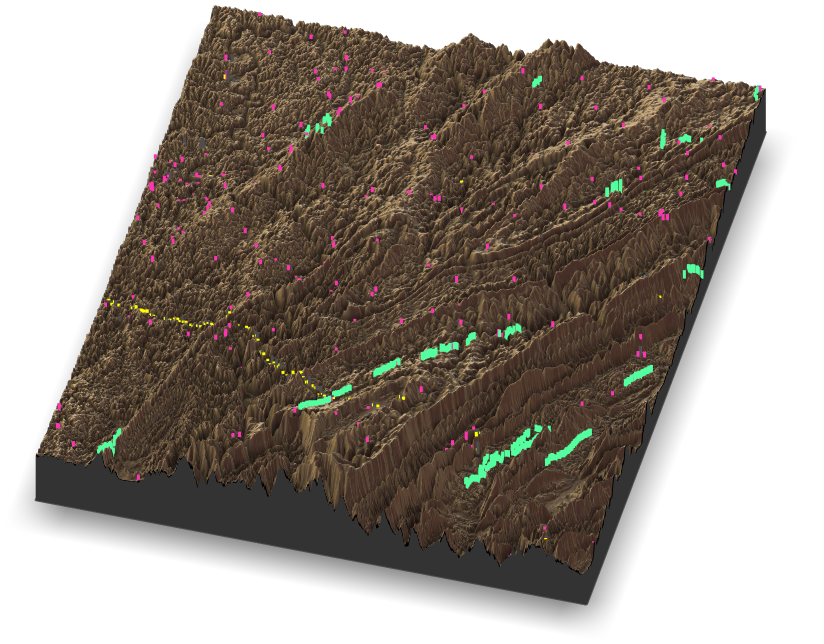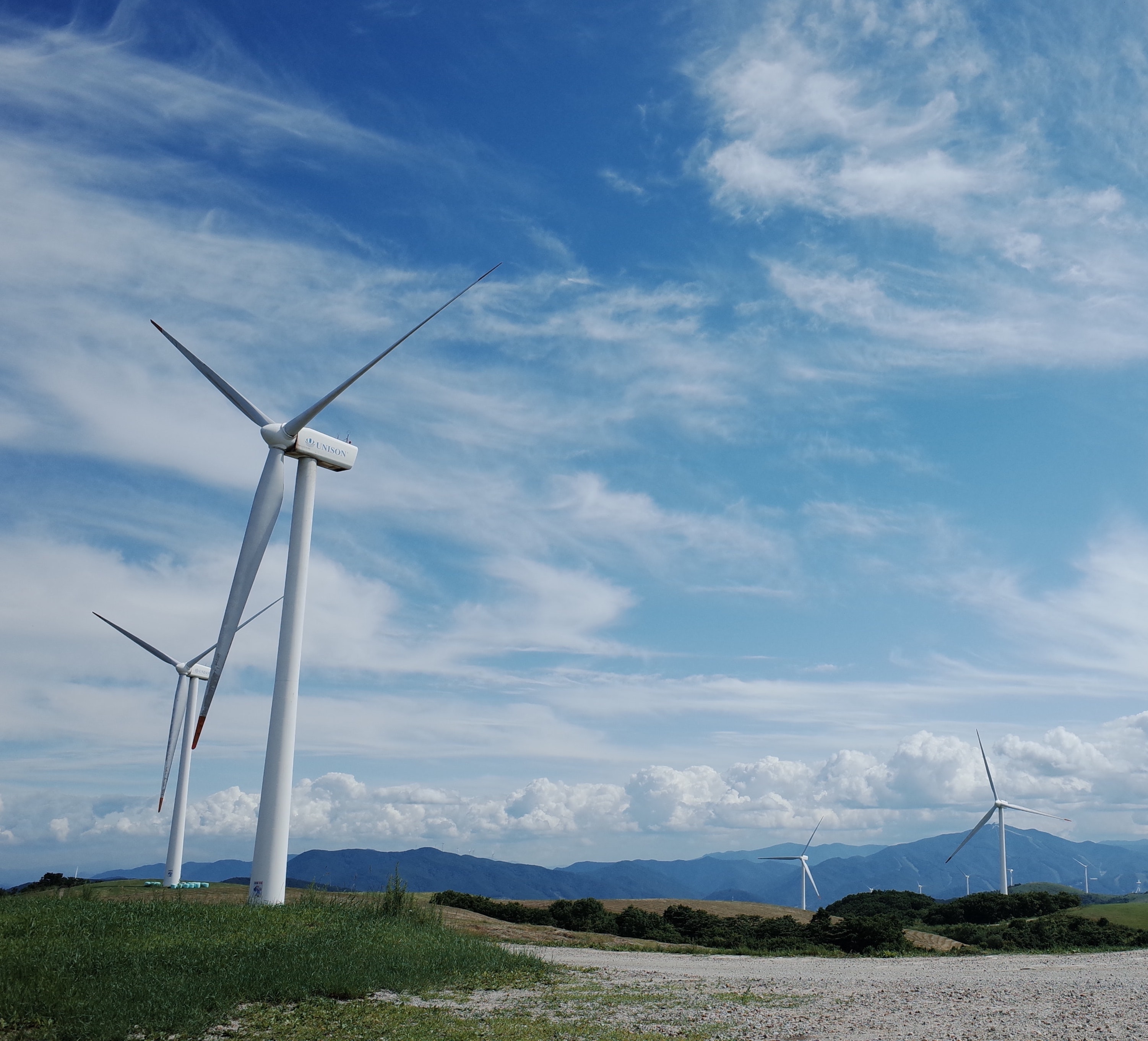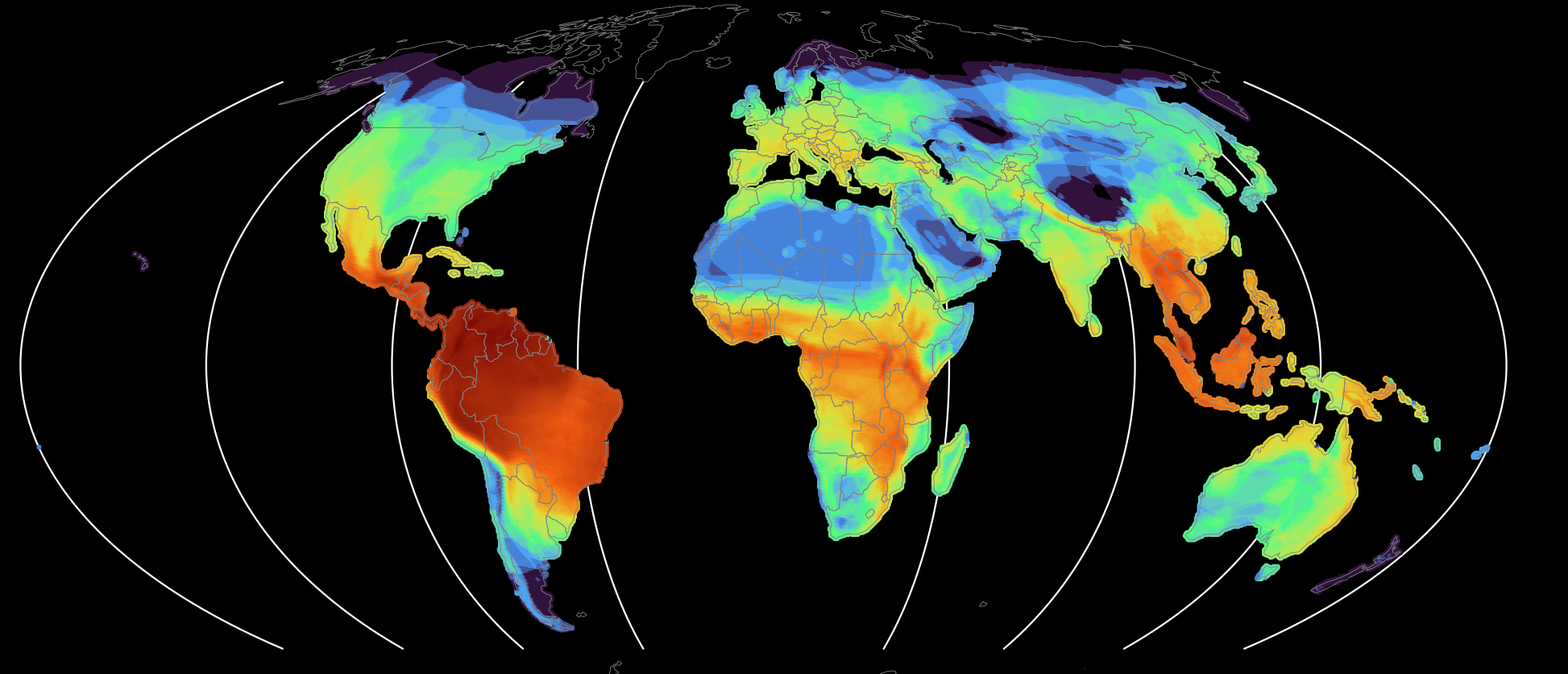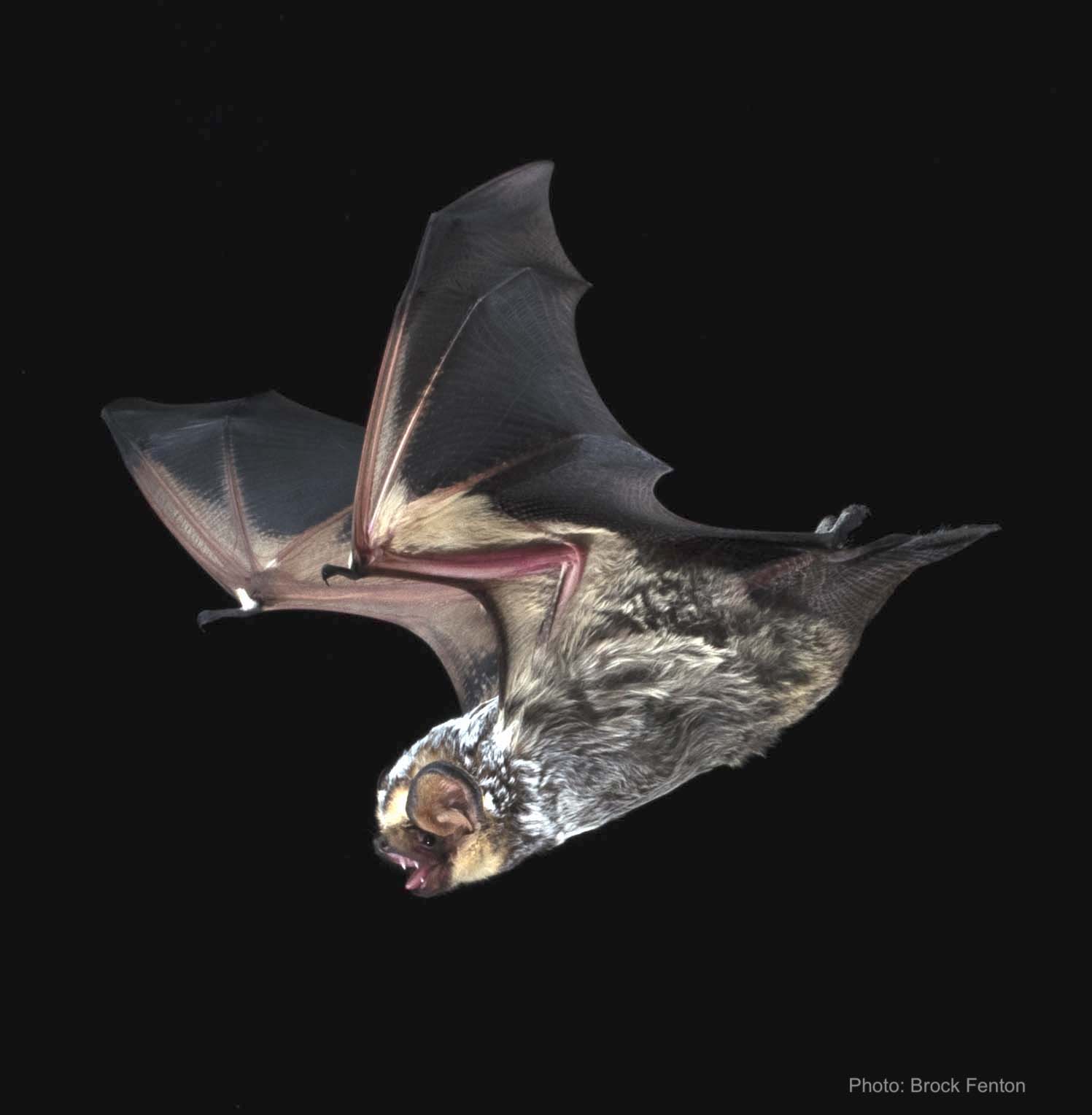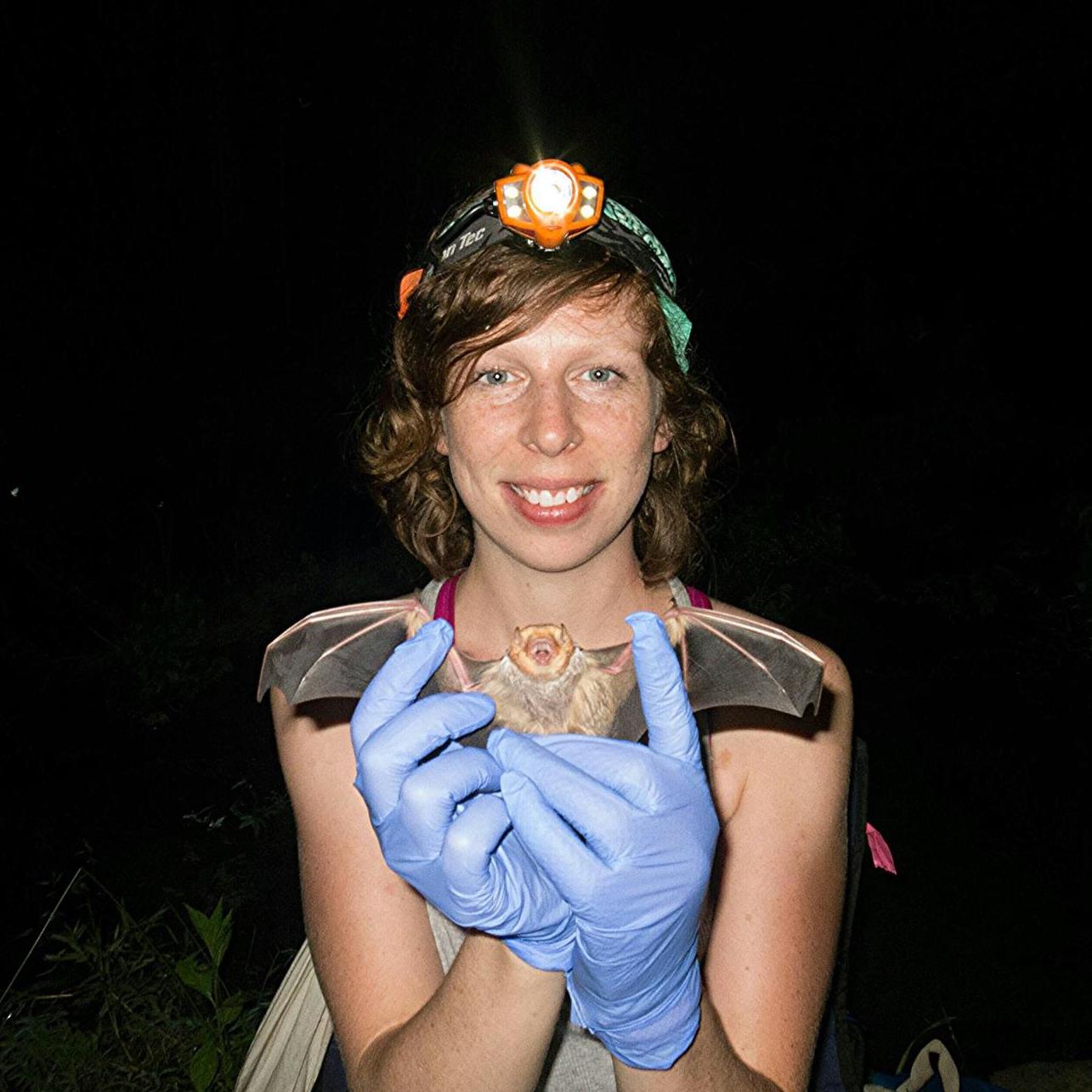Publications
Preprints
Vinod Anand, A;
Campbell, CJ; Loiselle, B; Guralnick, R.
Precipitation tolerance determines elevational migration strategies of resident birds of the Western Ghats of India.
BioRXiv.
Peer-reviewed

19.
Campbell, CJ; Nelson, DM; Nagel, J; Clerc, J; Weller, TJ; Weiringa, JG; Fraser, E; Longstaffe, FJ; Hale, AM; Lout, M; Pruitt, L; Guralnick, R; Vander Zanden, HB.
Migratory strategy is a key factor driving interactions at wind energy facilities in at-risk North American bats.
Ecology Letters. 28:e70202.
18. Wilson, J*, True, M*;
Campbell, CJ.
Autumn migration to higher latitudes in Seminole bats (
Lasiurus seminolus) redefines seasonal ranges: evidence from stable isotopes and fatality data from wind energy facilities.
Ecology & Evolution. 15:e71657.
 17.
17. Rubin, J;
Campbell, CJ; Carvalho, APS; St Laurent, RA; Crespo, GI; Pierson, TL; Guralnick, RP; Kawahara, AY.
Macroevolutionary constraint and selection on anti-bat moth tails.
Proceedings of the Royal Society B. 292(2046).
 16. Campbell, CJ
16. Campbell, CJ; Gardner, JH; Rushing, CS; Norvell, R; Farr, CM; Savides, K.
Quantifying rosy-finch migration with stable hydrogen isotope feather markers highlights the need for inter-state collaboration to reach conservation goals. 2025.
Avian Conservation and Ecology. 20(1):6.
 15.
15. Belitz, M;
Campbell, CJ; Drum, RM; Leuenberger, W; Morelli, TL; Nail, J; Shirey, V; Warner, S; Thogmartin, W; Zipkin, EF.
A case for community assemblage-level conservation to address the biodiversity crisis.
Nature Reviews Biodiversity. 2025. 1, 134–143.
 14.
14. Carpenter, B* &
Campbell, CJ*; Fanning, A; McBride, M.
Extensive migratory mixing of wintering Wilson’s snipe (
Gallinago delicata) highlights the need for international coordination for monitoring and management.
Ornithological Applications. duae064.
 13. Campbell, CJ
13. Campbell, CJ; Cheng, T; Akre, K; Adams, A; Solick, D; Bennett, A; Newman, C; Frick, W.
Maximizing benefits to bat populations through management of power line corridors.
Ecological Solutions and Evidence. 5 (4), e12392.
 12.
12.
Adams, AM Trujillo, LA;
Campbell, CJ; Akre, KL; Arroyo-Cabrales, J; Burns, L; Coleman, JTH; Morris, K M; Ortega, J; Reichard , JD; Reichert, B; Segers, JL; Whitby, MD; Frick, WF.
The State of the Bats in North America.
The Annals of the New York Academy of Sciences. 2024, 1–14.
11.
Wieringa, JM; Nagel, J;
Campbell, CJ; Nelson, DM; Carstens BC; Gibbs, HL.
2024.
Geographic sources of bats killed at wind-energy facilities in the eastern United States.
PeerJ 12, e16796.
 10.
Campbell, CJ
10.
Campbell, CJ; Barve, V; Belitz, M; Doby, J R; White, E; Seltzer, C; Di Cecco, G; Hurlbert, AH; Guralnick, R. 2023.
Identifying the Identifiers: How iNaturalist facilitates collaborative, research-relevant data generation and why it matters for biodiversity science.
BioScience. 2023.
 9.
9.
McCleery, R; Guralnick, R; Beatty, M; Belitz, M;
Campbell, CJ; Idec, J; Jones, M; Kang, Y; Potash, A; and Fletcher, RJ.
2023.
Uniting Experiments and Big Data to advance ecology and conservation.
Trends in Ecology & Evolution.
8.
Wieringa, JG; Nagel, J;
Campbell, CJ; Nelson, DM; Carstens, BC; Gibbs, HL.
2023.
Combining stable isotopes, trace elements, and distribution models to assess the geographic origins of migratory bats.
Ecosphere 14(6), e4588.
7.
Smith, LM; Gore, JA; Doonan, TJ;
Campbell, CJ.
2022.
Tricolored bats at a southern range edge exhibit partial migration northward in autumn.
Movement Ecology 10(1), 1-13.
 6.
Campbell, CJ
6.
Campbell, CJ; Nelson, DM; Gates, JE; Gibbs, HL; Stevenson, ER; Johnson, B; Nagel, J; Trott, R; Wieringa, JG; Vander Zanden, HB.
2022.
White-nose syndrome pathogen
Pseudogymnoascus destructans detected on migratory bats during summer and autumn, including hoary bat (
Lasiurus cinereus).
Journal of Wildlife Diseases.
 5.
Campbell, CJ
5.
Campbell, CJ; Fitzpatrick, MC; Vander Zanden, H; Nelson, DM.
2020.
Advancing interpretation of stable isotope assignment maps: comparing and summarizing origins of known-provenance migratory bats.
Animal Migration.
 4.
4.
Katzner, TE; Nelson, DM; Diffendorfer, JE; Duerr, AE;
Campbell, CJ; Leslie, D; Vander Zanden, HB; Yee, JL; Sur, M; Huso, MMP; Braham, MA; Morrison, ML; Loss, SR; Poessel, SA; Conkling, TJ; Miller, TA.
2019.
Wind energy: An ecological challenge.
Science 366(6470):1206–1207.
3.
Nelson, DM; Nagel, J; Trott, R;
Campbell, CJ; Pruitt, L; Good, RE; Iskali, G; Gugger, PF.
2018.
Carcass age and searcher identity affect morphological assessment of sex of bats.
The Journal of Wildlife Management 82(8), 1582-1587.
 2.
Campbell, CJ
2.
Campbell, CJ; Nelson, DM; Ogawa, NO; Chikaraishi, Y; Ohkouchi, N.
2017.
Trophic position and dietary breadth of bats revealed by nitrogen isotopic composition of amino acids.
Scientific Reports 7:15932.
 1.
1.
Roman, J; Altman, I; Dunphy-Daly, M;
Campbell, C; Jasny, M; Read, A.
2013.
The Marine Mammal Protection Act at 40: Status, recovery, and future of U.S. marine mammals.
The Annals of the New York Academy of Sciences 1286:29-49.
